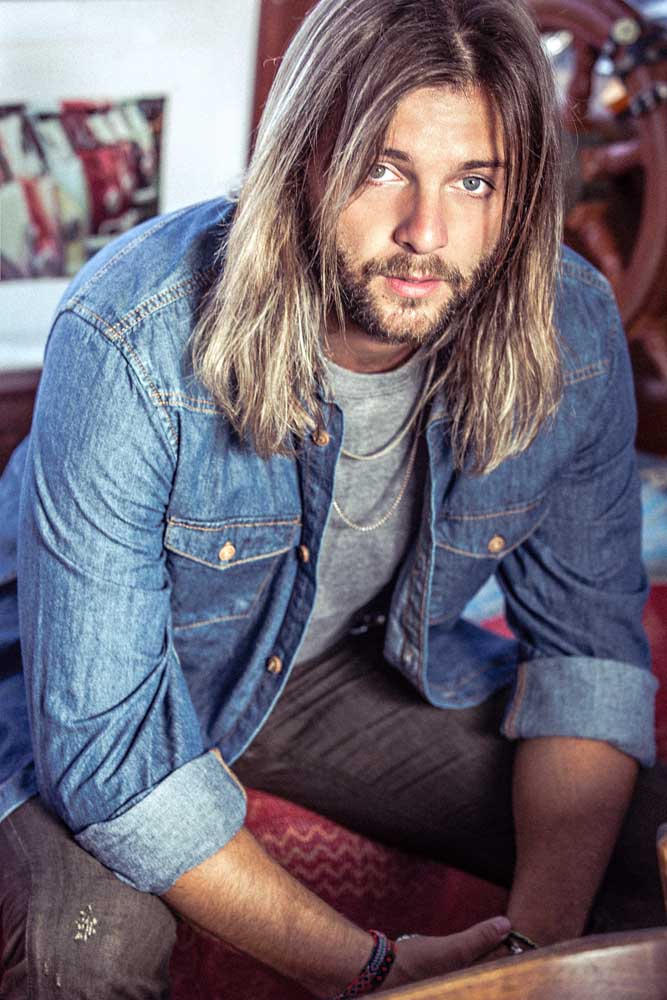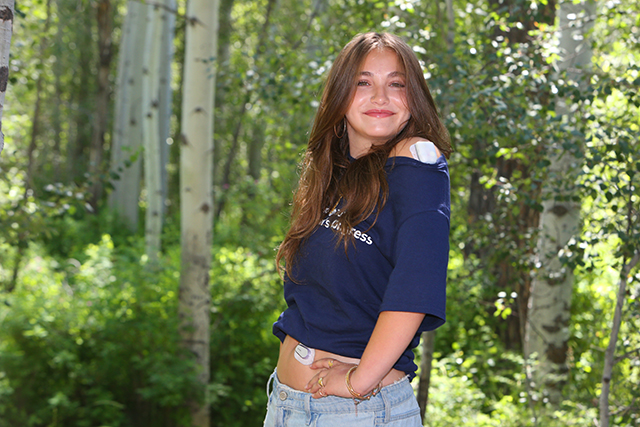Central Oregon loves trucker hats. How did they get here?
Published 12:00 am Tuesday, August 28, 2018

- 79750920 - lace fabric black grid isolated white background
Foam and mesh-paneled trucker hats are everywhere in Bend. They’re perched on the heads of bike mechanics and marijuana dispensary clerks. They grace the brows of the wealthy Mercedes-Benz Sprinter van types and die-hard paddle boarders, shuttling their cattle dogs on the Deschutes River.
By accident or not, trucker hats’ ironclad — if technically adjustable — grip on Central Oregonians’ heads seems long lasting.
Trending
Gwen Duke, the co-owner of Style IQ, a personal stylist company in Bend, first noticed trucker hats in the area in the early 2000s on the heads of people in the music industry.
“From there it just grew,” Duke said. “Rockers and hipsters were wearing them, and then it became the norm. Now you see everyone across the board wearing them, even older people. It’s a better look than tight baseball caps. Fashion wise, I think trucker hats are here to stay.”
But how did trucker hats go from being promotional freebies that accompany agricultural products to becoming the unofficial rough-and-tumble cap of Central Oregon? Not everyone has the same answer.
“It’s a snowboard-skateboard-surf thing,” said Guy Young, who wore a mustard Boneyard Beer trucker hat during a recent visit to Tactics, a downtown board shop. Young, 49, has sported a trucker hat since 1991. But golfers are “starting to wear trucker hats now, too. They’ve become popular.”
Young has seen surfers wearing trucker hats bobbing in a lineup, waiting for a wave. The hats keep the sun off their faces, and the mesh dries quickly. Surfers customize their hats by adding a drawstring that goes under the chin, Young said. Growing up in Southern California, Young was a competitive surfer sponsored by Quiksilver, whose surf team was managed by the man who would soon found the brand Volcom, Young said.
“He put one on my head,” Young said, describing the all-white trucker hat with a black logo. “I said ‘Oh, my gosh, this is not the ball cap I’m used to wearing.’”
Trending
Beyond fitting his head well, Young likes that his trucker hats, which are stamped with logos, allowing him to represent his friends’ local businesses, such as Boneyard Beer and Phantom Farms, a marijuana operation.
“It’s all about who you want to represent,” Young said. “There are some really good companies out there, and I like to represent my friends.”
Indie rock credential
The trucker hat has surfed several channels to mainstream popularity, and Thomas Morton has followed the trend. Morton, a veteran writer and producer at Vice, a Brooklyn, New York-based media company, has dedicated his career to sifting through the world’s subcultures, including fashion.
Morton, 35, views trucker hats as a mix of working-class, indie rock and tacky Hollywood excess.
Trucker hats’ earliest popular culture appearance Morton can pinpoint is Guns N’ Roses’ 1987 music video “Welcome to the Jungle.” In its opening scene, Axl Rose steps off a bus with a suitcase. He’s wearing a flannel shirt, a white Bob Seger trucker hat and chewing a long piece of grass. He’s playing up his prefame self as a country bumpkin who’s arrived in the big, bad city. At that time, the trucker hat had already solidified its symbolic place in America’s social strata.
In the 1983 book “Class: A Guide Through the American Status System,” author Paul Fussell refers to different clothing items tied to particular classes. He singles out the mesh-backed cap as a lower-class piece of fashion, Morton said.
“Fussell attaches particular significance to the fact that the trucker hat is adjustable. When you’re (traditionally) buying a hat, you want to find one that is your size and there are elements of tailoring to it,” Morton said. “To have something that is one-size-fits-all was very (proletariat) at the time.”
Morton grew up in an Atlanta suburb a short drive from Appalachia, where he first glimpsed trucker hats at 1990s monster truck rallies. Later, Morton noticed some of his favorite indie bands’ members and, soon, the fans, began wearing trucker hats and bootcut jeans.
“That’s why I think indie kids in the late ’90s, and then New York hipsters in the 2000s, get accused of working-class affectation,” Morton said. “A lot of that originates from indie rock in that it was a dressed-down version of punk. People were experimenting with country and these once-verboten forms. And bands are touring — they’re constantly on the road. You know, you go into any truck stop and the first thing from the door is the little circular rack with all the hats. Those were kind of travel accessories, and they fit a certain aesthetic. They went well with a denim jacket; they looked good when they got dirty, and they were a subtle f— you to the fact that a lot of kids interested in indie rock were middle-class suburban kids.”
But Morton doesn’t know exactly who is responsible for integrating trucker hats into the masses. It’s too easy to pin it on Ashton Kutcher for wearing them in L.A. in the early 2000s. After all, models wore trucker hats at Vice’s fashion show during the fall 2003 New York Fashion Week.
“That must have been the last year of trucker hats’ acceptability,” said Morton, who joined Vice in early 2004. By the next year, trucker hats were panned in the magazine’s notorious “Dos & Don’ts” fashion column, he said.
At some point in the aughts, $100 Von Dutch trucker hats became an indispensable, if gauche, status symbol.
“That was once the wave had crested, let’s say,” Morton said. “If you want an example of the classic, bogus trucker hat, Von Dutch is the go-to example. That’s when they broke the mainstream, became less a symbol of membership in the indie-rock community and more of a ‘poseur fashion.’”
Ventilate the underground
If a trucker hat is the mark of someone who doesn’t belong in New York City, there are other places where trucker hats never fell out of favor — the skateboard world.
Ryan Henry, the managing editor of San Francisco-based Thrasher skateboard magazine from 2000 to 2013, chalks up trucker hats’ enduring popularity to the skateboarders who grew up in the mountain and farming towns of Northern California.
“There was a certain time in the early ’90s when I noticed skaters from rural/backwoods areas co-opting the opposition — hicks — by wearing mesh caps, Wranglers and packing chaw,” Ryan said, adding that the opposite of the hip hop-inspired “fresh” aesthetic that was earning a place in skateboarding culture. Surfing and snowboarding followed suit, Henry said.
“Then girls started wearing them — kind of the cutest thing ever,” he said. “The deal was sealed.”
At Tactics, about 50 varieties of hats line the shelves. Trucker hats rub shoulders with crisp, cloth snapbacks and curved-brim, floppy-crowned “dad hats.” But trucker hats are the rule. Tactics manager Adam Gerken has sold trucker hats throughout his various posts in the outdoors industry for 20 years. At Tactics, a best-selling hat is a shop-branded trucker with a badge depicting Mount Bachelor.
Aiden and Aaron McCormack, brothers and clad in overalls, consider the trucker hat a nonverbal way of expressing local belonging.
“Bend recently became a cool town, but it used to be an old logging town,” said Aiden, 17, and a senior at Summit High School. “I just feel like trucker hats are a piece of Bend’s history, like subconsciously. I don’t know if it’s specific to Bend, but the trucker hat is connected to the Pacific Northwest look.”
The McCormacks keep trucker hats in their cap rotation, which also includes vintage snapbacks.
“Trucker hats are the only other hat I can wear,” Aiden said. “They fit well, too, because they just sit on top of your head.”
But not everyone in Central Oregon loves the trucker hat.
On a recent evening, six long-haul semi-trucks idled outside the Madras Truck & Cafe. Sharon Kintrea worked the counter. She said truck drivers wear mesh-paneled caps about half the time.
“They wear all different kinds,” Kintrea said. “Some are rough and scruffy. Some are military or captain hats. One trucker came in wearing a fish hat. It had a fish head sticking out the front and a tail sticking out the back.”
In a nearby booth, Reno Hegler, 84, sat with his grandson, Jade, 25, and a friend. The elder Hegler wore a green cap with white mesh paneling. The logo for Stihl, a chainsaw maker, stretched across the crown and along the heavy-duty yellow suspenders he wore. Now mostly retired, Hegler worked as a timber trucker and lumberjack in the Warm Springs Indian Reservation. He only became aware of trucker hats about three years ago.
“I got this one for free when I bought a chainsaw,” Hegler said. “Before, I only wore stocking caps. I didn’t like wearing hats with bills in my truck. If I looked over my shoulder it would bump against the window and go crooked. I’d get so disgusted, I’d fling it across the cab.”
And how does Hegler refer to his mesh-panel cap?
“I just call it ‘a hat,’” he said.
— Reporter: 541-617-7816, pmadsen@bendbulletin.com








